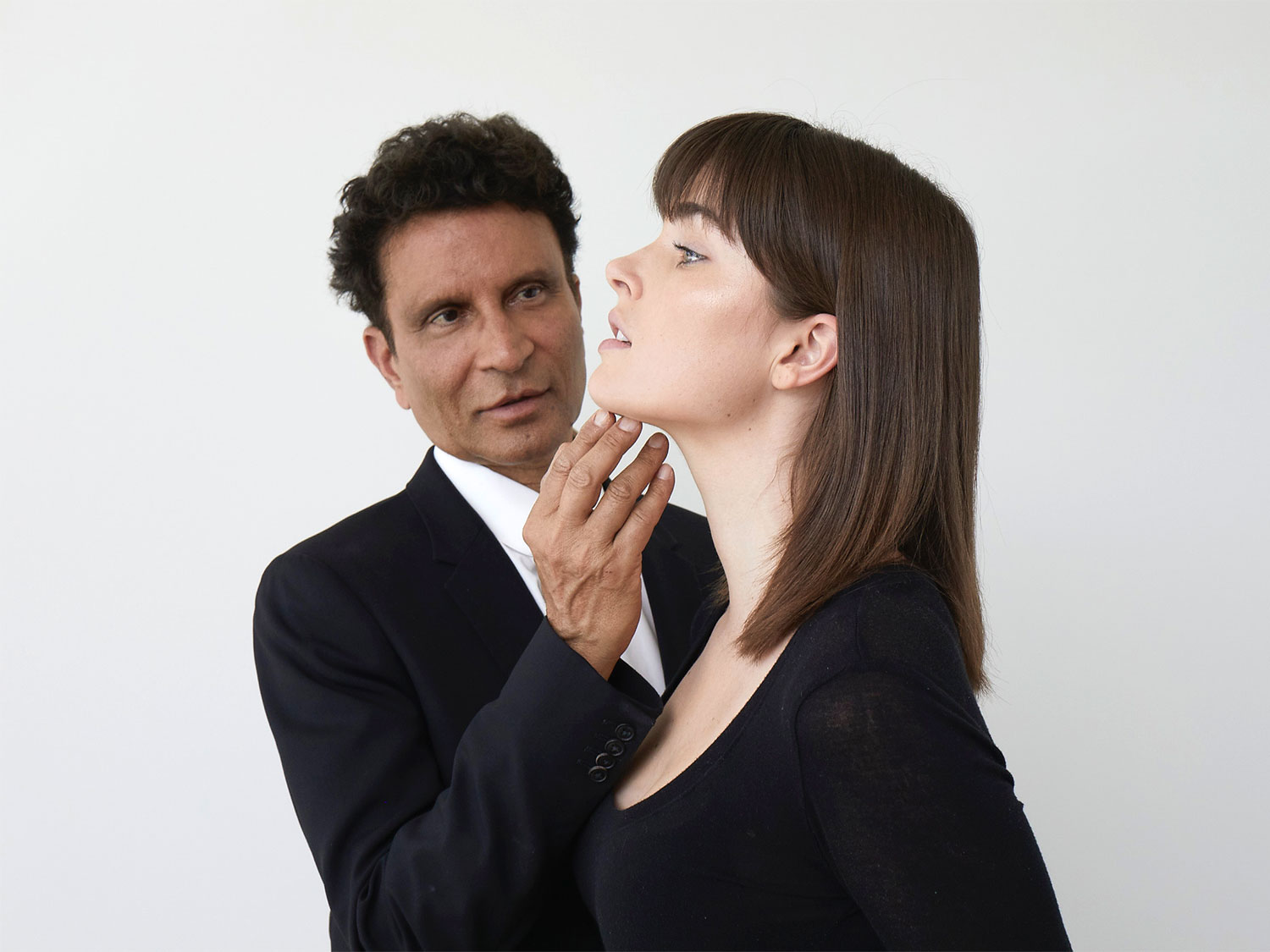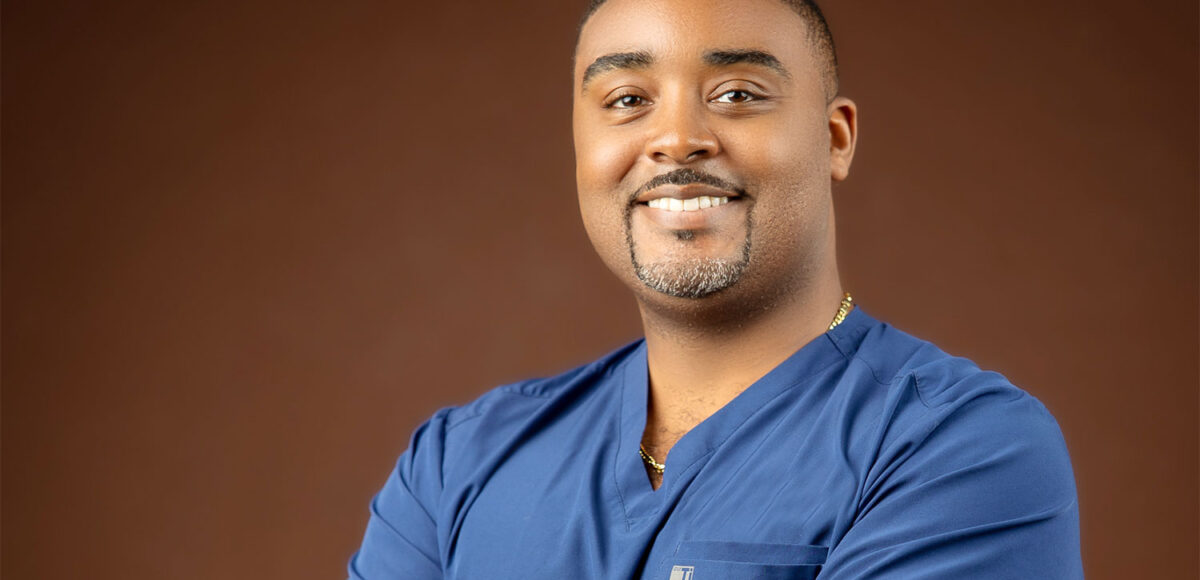Hair, nails, outfit and … Botox?
The holidays are here, and the wish list of some of the city’s younger residents may have a surprising addition. That’s because an increasing number are considering Botox and other age-defying injectable treatments in an attempt to freeze the clock.
It’s been over two decades since Botulinum toxin, or Botox as it’s more commonly known, was first approved for cosmetic use by the FDA. Traditionally reserved for patients in their 30s and above, Botox is a neuromodulator that works by temporarily paralyzing muscle movement to reduce visible expression lines and wrinkles.
But now, Botox is catching on with a younger crowd. Millennials and Generation Z have fast become proponents of preventative Botox, or “Baby Botox,” as it’s often referred to.
Carl M. Truesdale, M.D., is a facial plastic surgeon based on Rodeo Drive. He explained that Botox can be administered on a spectrum, from “treatment to preventative.”
“As a prevention, Botox can be used if someone doesn’t have resting lines or signs of aging. The neurotoxin can weaken the muscle before lines develop. This is given over time, usually over the course of several years, so wrinkles do not form,” Truesdale said.
Such prevention typically involves using smaller doses on smaller muscle groups for a more subtle treatment effect.
Natalia Guzman, a Beverly Hills-based aesthetic nurse practitioner, explained, “The FDA-approved average is 20 units of Botox in between the eyes or for the forehead, and then 12 units per side for the crow’s feet. But with Baby Botox, we’re only talking about something between 5 or 10 units, so it’s about one-third of the regular dosage.”
The smaller doses don’t tend to last as long as traditional Botox injections either. Guzman likes to remind her patients that “dosage equals duration.” This means the effects of Baby Botox generally wear off much more quickly.

Photo by Abby cox
The Rising Popularity of Cosmetic Interventions
Although the “baby” in “Baby Botox” often refers to the nature of micro-dosing (using smaller amounts), social media has also adopted the term to describe the increasingly younger age of patients seeking out this treatment. Last year, over 137,000 patients aged between 20-29 received Botox injections, according to figures from the American Society of Plastic Surgeons (ASPS).
Botox wasn’t always as commonplace for this age group.
In fact, research by the ASPS found a 71% increase in Botox treatments administered to individuals in their 20s between 2019 and 2022.
So, what’s behind the sudden ascent in popularity?
“The rise of social media, particularly Instagram and TikTok, have meant awareness of Botox has grown exponentially,” said Urmen Desai, M.D., a Harvard-educated, double-board certified plastic surgeon based on Roxbury Drive. He has noticed a significant increase in younger patients requesting this treatment in recent years.
One such patient is Thomas Legrand, a 24-year-old who first started Botox and dermal fillers at 21. While he isn’t sure his parents would be accepting of a fresh round of Botox injections on his holiday wish list, he cites the pressure faced by his generation as a major influence in his decision.
“Yes, I do feel like I’m too young, but I see it as something I’m doing for aesthetic purposes,” he told the Courier. “I’ll admit I am influenced by social media—TikTok and Instagram are full of people who look ‘perfect.’ It’s no secret that those who are aesthetically good-looking have a massive following. So, those are the people you naturally end up wanting to emulate and pay so much money to try and look like in some way.”
There is no evidence to show the trend will die down any time soon either, with Botox also growing in prevalence for patients even younger than their 20s. The ASPS reported a 9% rise in Botox use for those aged 19 and under in the last year alone—a statistic evidenced across many of Beverly Hills’ top clinics. For instance, celebrity plastic surgeon Raj Kanodia, M.D., has patients as young as 16 years old visit him asking for Botox and other cosmetic procedures.

Photo by CAige Moore
For Ben Talei, M.D., the increase in Baby Botox treatments is symptomatic of a wider overall trend of people opting for cosmetic procedures younger than ever nowadays. Talei, a dual board-certified plastic surgeon, sees many young people in his clinic, the Beverly Hills Center for Plastic and Laser Surgery, where he refers to Baby Botox as “MicroTox.”
“Younger patients are trying to intervene early, whether it’s girls coming in for their lips or guys doing treatments like PRP to help prevent hair loss,” Talei said.
“They ask a lot sooner about Botox, starting from about 21 or 22 years old, in the hope of preventing aging around the forehead and eyes,” he added. This contrasts with a decade ago, when his youngest patients at the time tended to be in their late 20s.
An Unnecessary Intervention?
“We tell most of the young patients who come in that no, you don’t need Botox yet. It’s not going to prevent any aging if you start so young,” Talei said.
In fact, early intervention may risk more harm than good for young people. While the short-term effects of Botox only last for two to six months, depending on the individual, facial muscles naturally weaken over time. As a result, starting early could lead to unintended consequences later down the line.
According to Kanodia, doing too much too soon may have a reverse effect and accelerate the aging process instead.

“Repeated heavy Botox injections can make muscles become less active, resulting in a flatter or less dynamic appearance,” he said. “This leads to a lack of natural expression … which can make patients look older over time.”
Talei also warned about the risks of injecting a face that is still growing. “The skeletal growth around the jaw can change if someone, for example, botoxes the masseter [jaw] muscle too early in life.”
Many young people fall under the illusion that repeated Botox treatments when young are simply “maintenance” procedures and cause no harm.
“I don’t worry about [Botox] no longer working once I get older,” Legrand said. He plans to continue with repeated injectable treatments as a routine procedure now.
But Truesdale warned that overdoing it when you’re younger might impede how well Botox can work when patients reach an older age.
“It is always possible that you can develop antibodies to Botox that can cause it to become less effective. This usually happens over many years, but not always. If it does happen, you can take a break from Botox or switch neurotoxins,” he explained.
When an individual builds up resistance to one neurotoxin like Botox, it stops working as well. In this case, it’s standard practice for these patients to switch to an alternative like Dysport, Jeuveau or Xeomin.
However, with the long-term effects of Botox and similar procedures still generally unknown due to their relative novelty, it’s important to note that risks like building tolerance are very much dependent on the individual.
“I have many patients who started receiving Botox when it first came onto the market, and we haven’t seen any loss in efficacy over the years. If administered correctly, Botox can dramatically slow the signs of aging,” Desai said.
It’s not just Botox, though—many forms of cosmetic procedures carry greater risks for young people than they realize. According to Talei, lasers and radio frequency devices, which are also used as preventative treatments, can inadvertently speed up the aging process for younger faces.
“Young people are taking their beautiful, healthy, youthful skin and definitely aging it more rapidly by using lasers when they absolutely don’t need them,” he said. “Those are all devices that damage your skin in order for your body to repair, but the damage that you’re doing has to be worse than the damage you’ve already incurred in life, from sun exposure, aging, anything like that. And for a young person, that’s almost never the case.”

Baby Botox in Beverly Hills
Baby Botox is not a uniquely Beverly Hills phenomenon, but the city was amongst the first to catch onto the trend.
The Motykie Med Spa, spearheaded by the renowned Gary Motykie, M.D., who featured on E!’s “Dr. 90210,” began offering Baby Botox several years ago in response to growing demand in the community. “Beverly Hills and West Hollywood are definitely at the forefront of this trend,” he told the Courier.
Motykie believes there’s less of a stigma around cosmetic treatments now in part due to social media, but also because of a growing emphasis on self-care in the city. “Younger individuals view these treatments as part of their overall wellness regimen rather than something to fix a problem later on,” he said. “There’s a culture of prevention when it comes to aging here.”
Many clinicians agree that Beverly Hills’ image-conscious reputation has a big role to play in explaining why the city’s younger residents feel the need to start cosmetic procedures so early.
For Guzman, young people here feel the pressures of appearance not just from social media but also because of how normalized it is in their local environment. “I feel like younger girls are more worried about their appearance here because their friends or their moms are doing things like Botox, so there’s more exposure to it in Beverly Hills compared to Wisconsin or Tennessee, for example,” she said. “The environment here does push girls to do things younger and younger.”
And with the holiday season fast approaching, the injectors of Beverly Hills are now busier than ever.
“The holidays are the busiest time of the year!” Guzman said. “It’s a whirlwind of patients having emergency Botox because they have so many parties to attend, and all want to look their best.”
If you’re planning on some Botox to look party-ready this year though, remember to factor in recovery time. Most doctors advise giving yourself about two-and-a-half to three weeks before a big event to heal and allow any bruising or swelling to resolve.
Social calendar aside, the festive season also sees a rise in demand for Botox because it’s one of the only times of year when people can recover from such procedures in private.
“A lot of people have downtime where they’re off work or school, so they choose to do more involved procedures now in the hopes that nobody will notice,” Guzman said.
When to Start?
If you want to use the holiday down period to indulge in Botox injections for the first time, there are a few things to keep in mind.
While many doctors agree that the early 20s is far too young to begin receiving regular Botox injections, the matter of when to start if you want to slow down the signs of aging depends entirely on the individual.
“If you’re somebody with darker, thicker skin, in general, you don’t need to worry about it until your 40s,” Talei said.
Motykie believes there’s no “one-size-fits-all” approach when it comes to cosmetic procedures. “For most patients, I suggest considering Botox in their mid to late 20s if someone starts to notice fine lines or if they’re looking to prevent wrinkles from forming.”
But as each treatment is personalized to the individual, the best way to know if you’d benefit from Botox is to schedule a consultation with an accredited doctor.
Josef Hadeed, M.D., Chair of the Patient Safety Committee at the ASPS, advises the following: “Always research the credentials of your practitioner and ensure they are board-certified, as well as having the requisite training and experience. Looking at before and after photos can be helpful to see what kind of results you can expect.”
According to Hadeed, there is no standard recommended age at which to begin Botox injections. “Every person ages differently, and everyone has their own specific aesthetic goals,” he said.
The ASPS also cautioned that it’s important to remember we still don’t know the long-term effects on people who start Botox at a younger age.
Regardless of the age one may start Botox injections, all medical treatments carry risks of which patients must be made aware.
“Botox is relatively safe, but [there are] risks such as allergic reactions, over-weakening of muscles and headaches. The most common complication is ptosis, where the muscle is severely weakened causing a fallen eyebrow or eyelid,” Truesdale said.
According to Motykie, “Overuse or incorrect placement can lead to unnatural results, such as drooping or an overly stiff appearance.”
But the doctors of Beverly Hills are unanimous that the best thing you can do for anti-aging isn’t an intervention found in any of their offices.
Rather, it’s simply giving your skin adequate sun protection and being consistent with applying a daily SPF. So, maybe a good-quality sunscreen might be a better holiday gift than Botox for the Gen Zers in your life.







